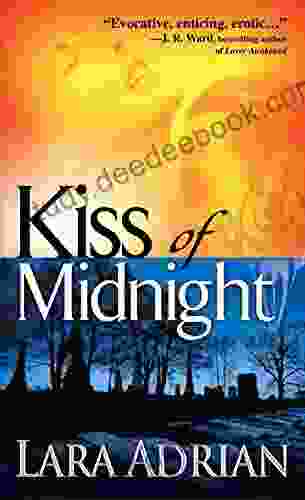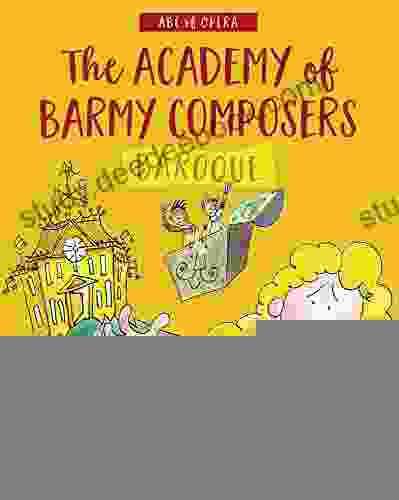Beethoven Piano Sonatas: A Short Companion

Ludwig van Beethoven's 32 piano sonatas are among the most beloved and frequently performed works in the classical music repertoire. They are a testament to Beethoven's genius as a composer and his profound understanding of the piano as an instrument. The sonatas span Beethoven's entire career, from his early years in Bonn to his final days in Vienna. They reflect his evolving musical style, from the Classical period to the Romantic period.
This short companion provides an overview of Beethoven's piano sonatas, including a brief discussion of each sonata's history, structure, and musical content. It is intended to be a resource for both listeners and performers, as well as for anyone who is interested in learning more about Beethoven's music.
Beethoven's early piano sonatas are characterized by their Classical style, with clear and concise forms and textures. They are often influenced by the music of Haydn and Mozart, but they also contain glimpses of Beethoven's own unique voice.
4.5 out of 5
| Language | : | English |
| File size | : | 8141 KB |
| Text-to-Speech | : | Enabled |
| Enhanced typesetting | : | Enabled |
| Word Wise | : | Enabled |
| Screen Reader | : | Supported |
| Print length | : | 353 pages |
- Piano Sonata No. 1 in F minor, Op. 2, No. 1 (1795): This sonata is a youthful work, but it already shows Beethoven's mastery of the piano. The first movement is a stormy Allegro, while the second movement is a delicate Adagio. The finale is a lively Rondo.
- Piano Sonata No. 2 in A major, Op. 2, No. 2 (1795): This sonata is more serene and lyrical than the first sonata. The first movement is a gentle Andante, while the second movement is a spirited Allegro. The finale is a graceful Rondo.
- Piano Sonata No. 3 in C major, Op. 2, No. 3 (1795): This sonata is the most substantial of the early sonatas. The first movement is a majestic Allegro, while the second movement is a slow and expressive Adagio. The finale is a lively Presto.
- Piano Sonata No. 4 in Eb major, Op. 7 (1797): This sonata is known for its beautiful melody and flowing accompaniment. The first movement is a lyrical Allegro, while the second movement is a serene Andante. The finale is a playful Rondo.
- Piano Sonata No. 5 in C minor, Op. 10, No. 1 (1798): This sonata is one of Beethoven's most popular works. The first movement is a dramatic Allegro, while the second movement is a slow and expressive Adagio. The finale is a lively Presto.
- Piano Sonata No. 6 in F major, Op. 10, No. 2 (1798): This sonata is a more relaxed and playful work than the previous sonata. The first movement is a graceful Allegro, while the second movement is a delicate Andante. The finale is a lively Rondo.
- Piano Sonata No. 7 in D major, Op. 10, No. 3 (1798): This sonata is known for its virtuosic piano writing. The first movement is a brilliant Allegro, while the second movement is a slow and expressive Andante. The finale is a lively Rondo.
- Piano Sonata No. 8 in C minor, Op. 13 ("Pathétique") (1798): This sonata is one of Beethoven's most famous works. The first movement is a dramatic Allegro, while the second movement is a slow and expressive Adagio. The finale is a lively Rondo.
- Piano Sonata No. 9 in E major, Op. 14, No. 1 (1799): This sonata is a bright and cheerful work. The first movement is a lively Allegro, while the second movement is a slow and expressive Adagio. The finale is a playful Rondo.
- Piano Sonata No. 10 in G major, Op. 14, No. 2 (1799): This sonata is a more serious and introspective work than the previous sonata. The first movement is a solemn Allegro, while the second movement is a slow and expressive Andante. The finale is a lively Rondo.
- Piano Sonata No. 11 in Bb major, Op. 22 (1800): This sonata is known for its beautiful melody and flowing accompaniment. The first movement is a lyrical Allegro, while the second movement is a slow and expressive Adagio. The finale is a playful Rondo.
- Piano Sonata No. 12 in Ab major, Op. 26 (1801): This sonata is a more relaxed and playful work than the previous sonata. The first movement is a graceful Allegro, while the second movement is a delicate Andante. The finale is a lively Rondo.
- Piano Sonata No. 13 in Eb major, Op. 27, No. 1 (1801): This sonata is known for its virtuosic piano writing. The first movement is a brilliant Allegro, while the second movement is a slow and expressive Adagio. The finale is a lively Rondo.
- Piano Sonata No. 14 in C# minor, Op. 27, No. 2 ("Moonlight") (1801): This sonata is one of Beethoven's most famous works. The first movement is a slow and expressive Adagio, while the second movement is a lively Allegretto. The finale is a delicate Andante.
Beethoven's middle sonatas are characterized by their greater complexity and emotional depth. They reflect Beethoven's growing mastery of the piano as an instrument and his own personal struggles.
- Piano Sonata No. 15 in D major, Op. 28 ("Pastoral") (1802): This sonata is a more relaxed and playful work than the previous sonatas. The first movement is a gentle Allegro, while the second movement is a delicate Andante. The finale is a lively Rondo.
- Piano Sonata No. 16 in G major, Op. 31, No. 1 (1802): This sonata is a more serious and introspective work than the previous sonata. The first movement is a solemn Allegro, while the second movement is a slow and expressive Adagio. The finale is a lively Rondo.
- Piano Sonata No. 17 in D minor, Op. 31, No. 2 ("The Tempest") (1802): This sonata is one of Beethoven's most dramatic and powerful works. The first movement is a stormy Allegro, while the second movement is a slow and expressive Adagio. The finale is a lively Rondo.
- Piano Sonata No. 18 in Eb major, Op. 31, No. 3 (1802): This sonata is a more relaxed and playful work than the previous sonata. The first movement is a graceful Allegro, while the second movement is a delicate Andante. The finale is a lively Rondo.
- Piano Sonata No. 19 in G minor, Op. 49, No. 1 (1797): This sonata is a more personal and introspective work than the previous sonatas. The first movement is a slow and expressive Adagio, while the second movement is a lively Allegretto. The finale is a delicate Andante.
- Piano Sonata No. 20 in G major, Op. 49, No. 2 (1797): This sonata is a more relaxed and playful work than the previous sonata. The first movement is a gentle Allegro, while the second movement is a delicate Andante. The finale is a lively Rondo.
- Piano Sonata No. 21 in C major, Op. 53 ("Waldstein") (1803): This sonata is one of Beethoven's most virtuosic and challenging works. The first movement is a brilliant Allegro, while the second movement is a slow and expressive Adagio. The finale is a lively Rondo.
- Piano Sonata No. 22 in F major, Op. 54 (1804): This sonata is a more relaxed and playful work than the previous sonata. The first movement is a graceful Allegro, while the second movement is a delicate Andante. The finale is a lively Rondo.
- Piano Sonata No. 23 in F minor, Op. 57 ("Appassionata") (1804): This sonata is one of Beethoven's most dramatic and powerful works. The first movement is a stormy Allegro, while the second movement is a slow and expressive Adagio. The finale is a lively Rondo.
- Piano Sonata No. 24 in F# major, Op. 78 (1809): This sonata is a more relaxed and playful work than the previous sonata. The first movement is a graceful Allegro, while the second movement is a delicate Andante. The finale is a lively Rondo.
- Piano Sonata No. 25 in G major, Op. 79 (1809): This sonata is a more serious and introspective work than the previous sonata. The first movement is a solemn Allegro, while the second movement is a slow and expressive Adagio. The finale is a lively Rondo.
- **Piano Sonata No.
4.5 out of 5
| Language | : | English |
| File size | : | 8141 KB |
| Text-to-Speech | : | Enabled |
| Enhanced typesetting | : | Enabled |
| Word Wise | : | Enabled |
| Screen Reader | : | Supported |
| Print length | : | 353 pages |
Do you want to contribute by writing guest posts on this blog?
Please contact us and send us a resume of previous articles that you have written.
 Book
Book Chapter
Chapter Story
Story Library
Library E-book
E-book Paragraph
Paragraph Sentence
Sentence Bookmark
Bookmark Shelf
Shelf Preface
Preface Footnote
Footnote Manuscript
Manuscript Bestseller
Bestseller Library card
Library card Narrative
Narrative Autobiography
Autobiography Reference
Reference Dictionary
Dictionary Thesaurus
Thesaurus Narrator
Narrator Character
Character Librarian
Librarian Catalog
Catalog Card Catalog
Card Catalog Borrowing
Borrowing Archives
Archives Study
Study Research
Research Scholarly
Scholarly Lending
Lending Reserve
Reserve Academic
Academic Rare Books
Rare Books Interlibrary
Interlibrary Literacy
Literacy Storytelling
Storytelling Awards
Awards Reading List
Reading List Book Club
Book Club Theory
Theory Richard Carman
Richard Carman Antoni Estevadeordal
Antoni Estevadeordal C K Prahalad
C K Prahalad Alfredo Candal
Alfredo Candal Regena Thomashauer
Regena Thomashauer Robert Howling
Robert Howling Bruce Catton
Bruce Catton Brian P Mccullough
Brian P Mccullough Greg Cohen
Greg Cohen Dani Ives
Dani Ives Toby Neighbors
Toby Neighbors Wallace Wang
Wallace Wang Debra Smith
Debra Smith Heather Wallace
Heather Wallace Robert Moose
Robert Moose Tracy Neumann
Tracy Neumann William Cope Moyers
William Cope Moyers Nicola Erbacci
Nicola Erbacci Lee D Kassan
Lee D Kassan Kandice Chuh
Kandice Chuh
Light bulbAdvertise smarter! Our strategic ad space ensures maximum exposure. Reserve your spot today!

 Brayden ReedComplete Owners Guide: Acquisition Cost, Care, Proper Care, Proper Health,...
Brayden ReedComplete Owners Guide: Acquisition Cost, Care, Proper Care, Proper Health,... Harvey HughesFollow ·5.4k
Harvey HughesFollow ·5.4k Jorge AmadoFollow ·6.6k
Jorge AmadoFollow ·6.6k Robert HeinleinFollow ·5.8k
Robert HeinleinFollow ·5.8k Jesus MitchellFollow ·12k
Jesus MitchellFollow ·12k Cason CoxFollow ·16.9k
Cason CoxFollow ·16.9k Shannon SimmonsFollow ·13.7k
Shannon SimmonsFollow ·13.7k Gabriel HayesFollow ·19.2k
Gabriel HayesFollow ·19.2k Gabriel BlairFollow ·11.5k
Gabriel BlairFollow ·11.5k

 Dominic Simmons
Dominic SimmonsIcky Island: An Unforgettable Adventure for Kids!
Introducing Icky Island: A Delightful One...

 Carlos Fuentes
Carlos FuentesThe Midnight Breed: Embracing the Shadows and Unlocking a...
Welcome to the captivating world of...

 Ike Bell
Ike BellTwelve Steps Toward Political Revelation: A Path to...
Politics, often perceived as a complex and...

 Cameron Reed
Cameron ReedTravels in Arizona Goldfield: Unraveling the Threads of...
Nestled amidst the rugged...

 John Grisham
John GrishamFlashpoints of Cinema History and Queer Politics:...
The relationship between cinema history and...
4.5 out of 5
| Language | : | English |
| File size | : | 8141 KB |
| Text-to-Speech | : | Enabled |
| Enhanced typesetting | : | Enabled |
| Word Wise | : | Enabled |
| Screen Reader | : | Supported |
| Print length | : | 353 pages |












